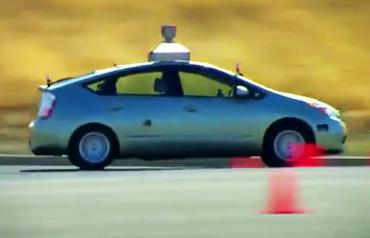
Since I’m an attorney who practices auto accident law for a living, and I work at a law firm called Michigan Auto Law, I often joke that I can’t wait to be put out of business. But there’s real truth to this statement, as I’ve said in writing about the development of self-driving cars, I truly look forward to the day where my career as an attorney helping accident and injury victims become obsolete — because the technology for autonomous vehicles is so advanced and there will no longer be car accidents that claim tens of thousands of lives every year.
But what about today? Are Google self-driving cars ready for the road?
Today, Google is developing its own self-driving car, and from news reports, still has some work to do. There are some serious and potentially dangerous safety issues with the current technology, according to a recent article verified by a Google representative in MIT Technology Review.
For instance, if a driverless car encountered a new traffic light that wasn’t accounted for on a map, it could potentially run the red light.
Google’s self-driving cars have successfully driven more than 700,000 miles. And they’re now being tested on city streets, to adapt to the unique challenges of city driving, like curbs and pedestrians.
But maps have so far been prepared for only a few thousand miles of roadway, so achieving Google’s vision of a road fully filled with driverless cars will require maintaining a constantly updated map of the nation’s millions of miles of roads and highways, MIT noted. And practicing law in Michigan, with its daily new road closings and construction everyone deals with, this could be a big challenge for Google cars.
Other unsolved problems, according to MIT, include:
- The self-driving car has yet to drive in snow and heavy rain.
- The self-driving car also has not tackled big, open parking lots or multilevel garages.
- Pedestrians are detected simply as “moving, column-shaped blurs of pixels,” meaning the driverless car wouldn’t be able to spot a police officer at the side of the road waving for traffic to stop.
- Sensors can’t tell if a road obstacle is a rock or a crumpled piece of paper, so the car will attempt to drive around either.
- The driverless car can’t detect potholes or spot an uncovered manhole if it isn’t coned off.
Last week, I wrote about vehicle to vehicle communication (V2V). This technology enables cars to directly communicate with one another. Once developed and mandated by the National Highway Traffic Safety Administration, V2V can be applied to self-driving cars and cars with human drivers. Here’s one example: Instead of a driver having to see and react to a car stopping ahead, any application of the brakes in the car ahead would send an electronic signal to your car. Your car could react immediately and automatically with V2V.
Google says it’s working toward remedying the safety problems in the MIT story.
Looks like my own obsolescence as an auto accident attorney isn’t going to happen just yet.


